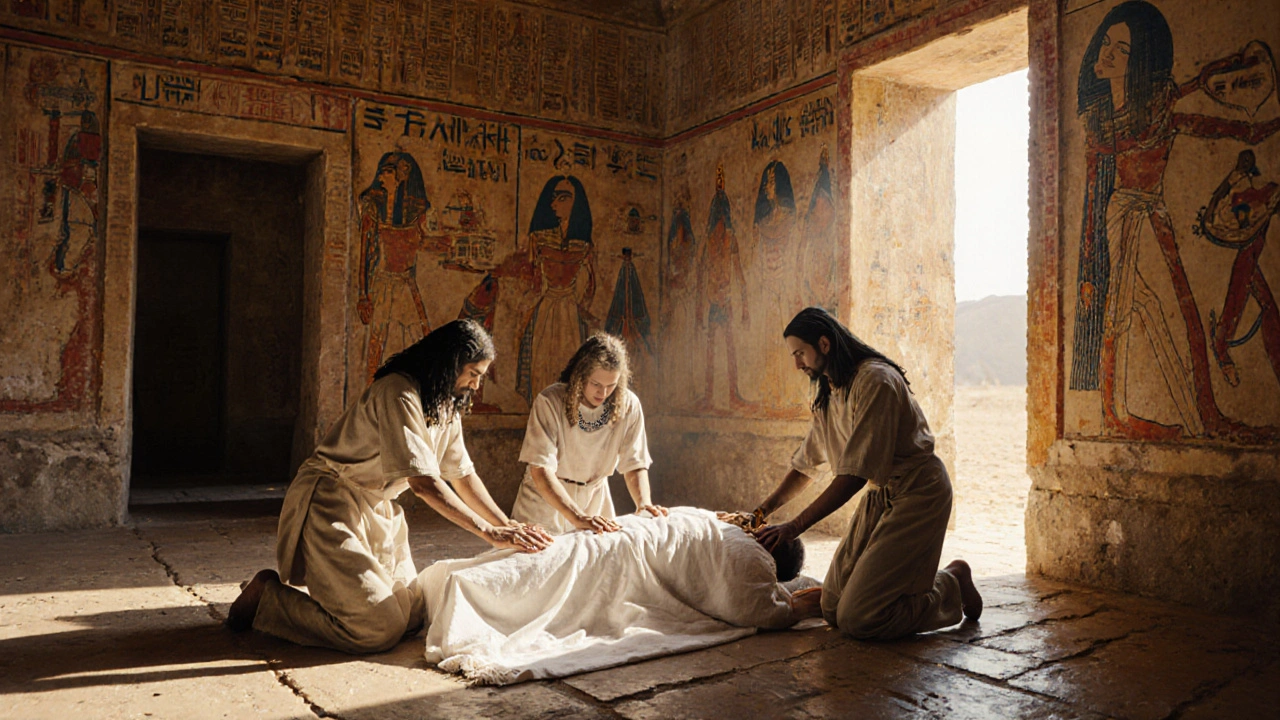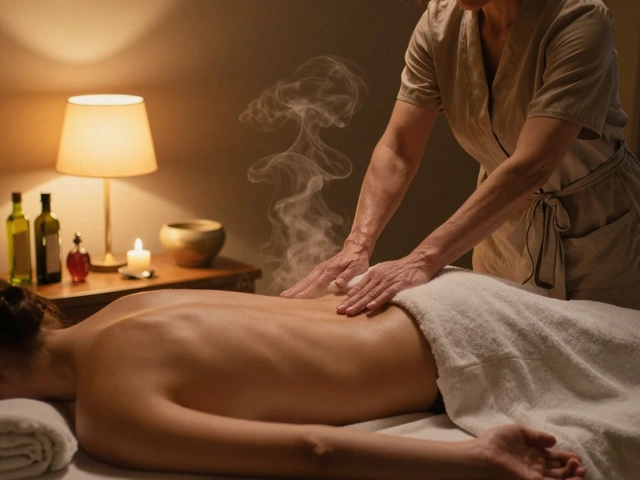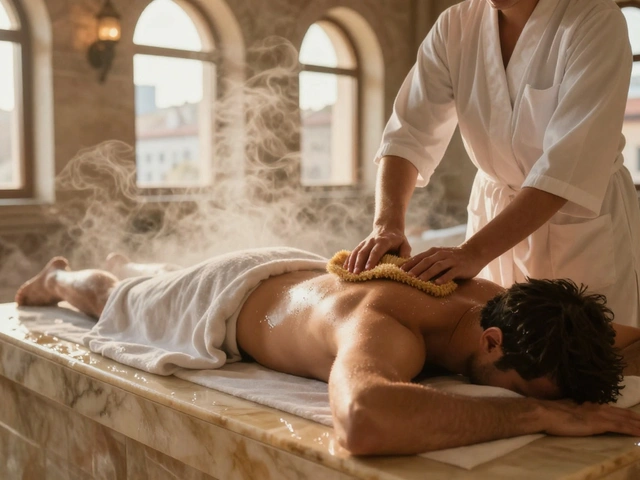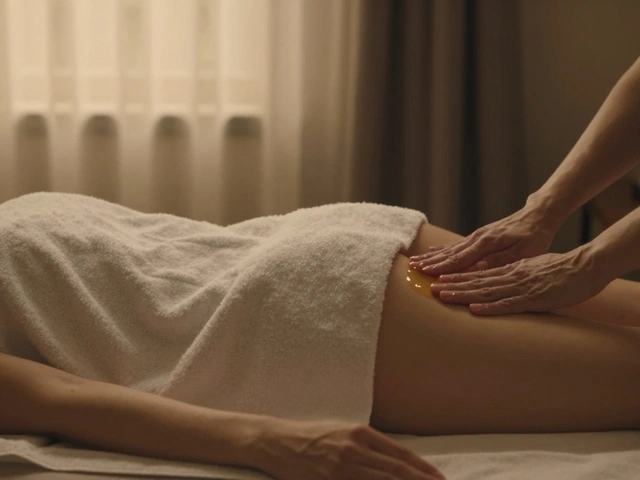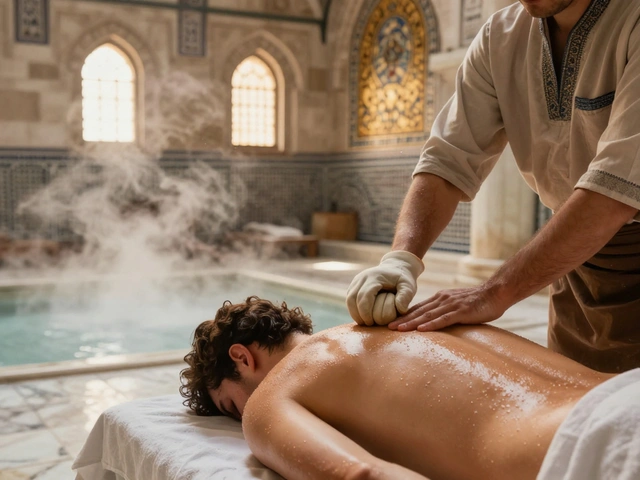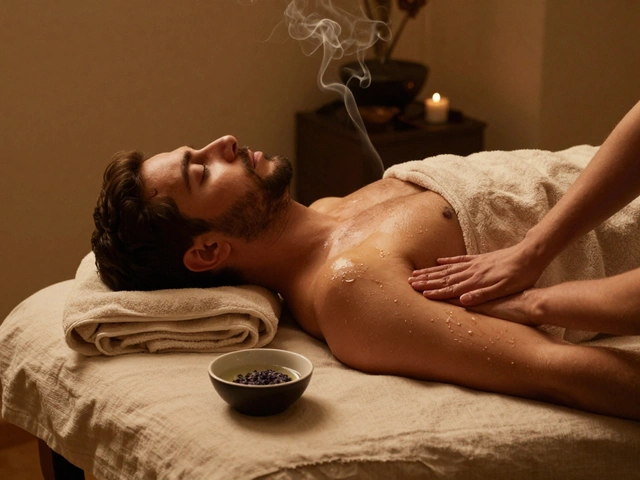Ancient Massage Techniques: Timeless Healing for Modern Life
When exploring Ancient Massage Techniques, hands‑on practices that date back millennia, using pressure, rhythm, and breath to restore balance. Also known as historic massage methods, this tradition forms the backbone of many modern styles. For instance, Tantric Massage, a sensual system that blends breath work with chakra awareness directly inherits the ancient focus on energy flow. Similarly, Nuru Massage, a slippery, body‑to‑body technique that emphasizes full‑contact glide echoes the historic use of smooth oils to ease tension. Thai Massage, a rhythmic stretch‑and‑press method rooted in Ayurvedic principles also borrows the ancient emphasis on meridian lines. Even Body to Body Massage, an intimate approach that leverages the therapist’s whole body as a tool can trace its lineage to early healing rituals that valued close, tactile connection.
Three core attributes define these ancient practices: pressure points, rhythmic breathing, and intent. Pressure points (or acupoints) are specific spots where muscle fibers converge with nerves; stimulating them can release blockages and boost circulation. The ancient texts describe these points with precise coordinates, much like today’s anatomy charts. Breath, another pillar, creates a wave that carries energy through the body; synchronized inhalations and exhalations amplify the therapist’s touch. Intent, or the therapist’s focused mindset, shapes the session’s outcome—whether the goal is deep relaxation, revitalizing energy, or emotional release. Modern styles adopt these attributes in varied ways: Tantric massage adds chakra alignment, Nuru massage adds glide for heightened skin sensitivity, Thai massage incorporates yoga‑like stretches, and body‑to‑body massage uses the therapist’s weight as an additional pressure source.
How Ancient Knowledge Shapes Today’s Sessions
Understanding these attributes helps you pick the right experience. If you crave a session that feels like a moving meditation, look for a therapist who emphasizes breath sync and gentle pressure—hallmarks of classic ancient technique. Want a more erotic, energy‑focused vibe? Tantric practitioners will guide you through chakra pressure while keeping the breath rhythmic, turning the ancient concept of "energy channels" into a modern sensual journey. For those who love the slippery feel of cold oil under warm skin, Nuru venues typically pour special seaweed‑based gel, echoing the historic use of scented herbal oils to open pores and calm nerves. Thai lovers will enjoy deep stretches that mimic the ancient practice of compressing energy lines while the therapist walks you through each position. Finally, body‑to‑body fans experience full‑contact pressure, mirroring the ancient belief that the therapist’s whole body can act as a conduit for healing vibrations.
Safety and training matter across all styles. Ancient teachers required apprentices to master pressure mapping and breath control before treating clients. Today, reputable centers ensure therapists hold certifications in their specialty—whether it’s a licensed massage therapist with a focus on Thai anatomy, a certified tantric guide, or a Nuru specialist trained in hygiene standards. Pricing varies, but the underlying value stays the same: a session grounded in centuries‑old wisdom that targets stress, tension, and energetic imbalance. Expect a range from modest hourly rates for a basic full‑body ancient technique to higher fees for specialized tantric or Nuru experiences that involve extra preparation and privacy.
When you step into a studio, you’ll notice subtle cues that link back to the ancient roots. Wooden tables or mats, natural oils, and soft ambient sounds all echo the environments where early healers worked. Therapists often begin with a brief discussion about your current state—stress, pain, or emotional blocks—mirroring the ancient intake method where the practitioner assessed the client’s “humors” before treatment. This conversation guides the pressure map they’ll use, ensuring each session feels personalized rather than generic.
One practical tip: ask your therapist how they incorporate breath into the session. A simple cue like “inhale as I press, exhale as I release” can turn a routine massage into a deeper, wave‑like experience that aligns with ancient rhythmics. Another tip: request a short warm‑up stretch if you’re interested in a Thai‑style session; this prepares the muscles and honors the ancient preparatory movements that activate meridians before deeper work.
Our collection below pulls together guides that dive into each related style, price breakdowns for Istanbul’s market, safety checklists, and step‑by‑step how‑tos for beginners and seasoned seekers alike. Whether you’re curious about the tantric breath sync, the slippery allure of Nuru, the disciplined flow of Thai, or the close‑contact power of body‑to‑body, you’ll find clear, actionable insight that builds on the ancient foundation laid out above. Ready to explore the full spectrum? Scroll down to discover detailed articles that expand on every technique, pricing nuance, and booking tip, all designed to help you choose the perfect session for your needs.
Body Massage History: How Massage Evolved Through the Ages
- Lara Kingston
- Oct 12 2025
- 7 Comments
Explore the centuries‑old journey of body massage, from ancient Egyptian rubs to modern Swedish techniques, and learn how each era shaped today's wellness practices.
View More